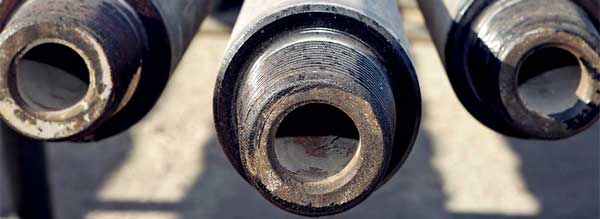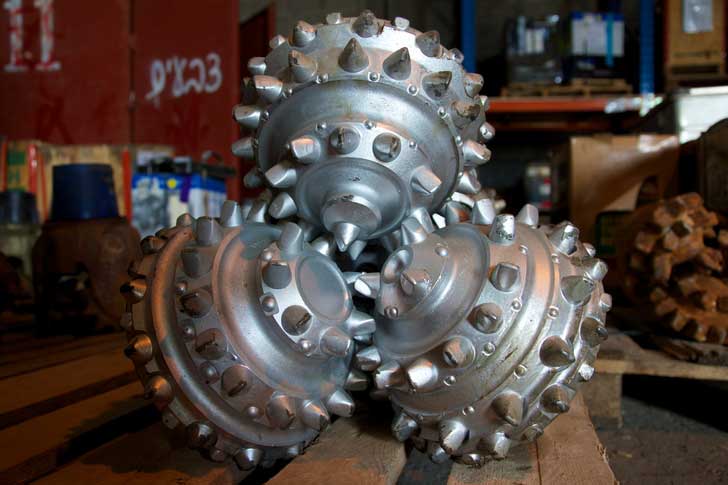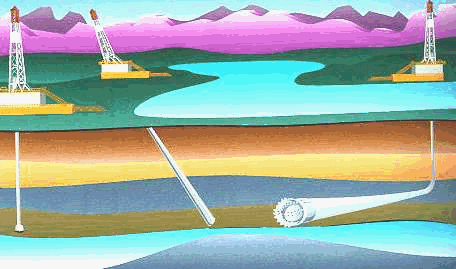What are OCTG tubular products?
OCTG, "Oil Country Tubular Goods", are essential components of the oil and gas industry. When it comes to the exploration, production and transportation of oil and gas resources, OCTGs are an absolute necessity. These tubular products are built to withstand the harsh conditions of the oil and gas industry.
This facilitates the extraction of hydrocarbons from extremely deep in the earth's crust in a safe and effective way. This article describes the basic OCTG components, the process by which it is produced and its significance in the industry.

Types of OCTG pipes
API 5CT is the standard technical specifications for steel casing and tubing pipes used for oil wells in petroleum and natural gas industries.
Casing Pipe
Casing pipes cover the inside of the wellbore and give it shape. They prevent the well from collapsing and protect it from external pressure, and make it easier to extract oil and gas. There is a wide range of casing pipes on the market, each available in its own set of dimensions and qualities.
Tubing Pipe
Inside the casing pipes are tubing pipes, which transport oil and gas to the well. They bring fluids that have been extracted from the reservoir to the surface. Tubing pipes have a smaller diameter than casing pipes and they have to deal with pressure and fluids that eat away at them. They are made to withstand high temperatures, high pressures and corrosive environments.
Drill pipe
The drill pipe is a heavy, seamless tube that rotates the drill bit and circulates drilling fluid. This allows the drilling fluid to be pumped through the drill bit and back into the annulus. The pipe can withstand axial tension, extremely high torque and high internal pressure. Therefore, the pipe is extremely strong and essential in OCTG operations.
Construction and materials
- OCTG pipes are typically made of high-strength corrosion-resistant steel alloys, such as carbon steel, alloy steel or stainless steel.
- These pipes are manufactured using specialized processes such as seamless extrusion or electrical resistance welding (ERW) to ensure uniformity, strength and dimensional accuracy.
- Casing pipes are available in various sizes, grades and specifications for different well conditions, depths and environments.
Applications of OCTG
OCTG products are used in many different ways in different stages of oil and gas operations.
- Exploration and drilling: Casing and casing are essential. Casing prevents the well from collapsing and gives it structural integrity. Casing moves drilling fluid and rotates the DRILL BIT.
- Production and completion: Tubing moves oil or gas from the wellbore to the surface during production. It also makes it easier to put downhole tools such as pumps, packers and control devices in place.
- Well, intervention and workover: OCTG is used to repair, stimulate or maintain existing wells during well intervention and workover activities. People often use coiled tubing, a long piece of tubing wrapped around a reel.
- Offshore operations: OCTG products are made to withstand high pressure and corrosive conditions common in harsh offshore environments. They are used for offshore drilling, production platforms and pipelines that go under water.

OCTG Pipe Connections
OCTG pipes are threaded on both ends for easy installation and connection. The two most common types of pipe connections are..
API Connections: These connections are API compliant and are widely used in the industry. These include API Regular, API External-Upset, and API Integral-Joint connections.
Premium Connections: Premium connections offer improved sealing, pressure resistance, and fatigue strength. These connections are designed for use in harsh environments and critical applications.
Importance of OCTG in Industry
The oil and gas industry is completely dependent on OCTG. Casing is crucial for maintaining the structural integrity of a well, preventing collapse due to pressure from surrounding rocks, and preventing fluid migration between formations.
Tubing is a conduit for transporting oil or gas from the reservoir to the surface, which ensures efficient production. It is also a conduit for chemical injection, gas lift, and other well operational processes.
Drill pipes are crucial for drilling because they transfer torque and drilling fluid to the drill bit. To effectively penetrate different rock layers, they must withstand enormous tensions and torsional forces.
The most important features of OCTG are reliability and durability. Failure of these tubular products can have serious consequences, such as well blowouts, environmental damage, and loss of production. To ensure the integrity and safety of OCTG, strict quality control measures are implemented, such as material selection, manufacturing processes, and testing.
Oil Country Tubular Goods (OCTG) are critical components of the oil and gas industry, playing a significant role in drilling, completion, and production activities. Understanding the different OCTG types, production processes, and applications is critical for professionals and individuals in the industry.
Related Post(s)

Conventional wells are drilled vertically from the surface straight down to the pay zone. This is the traditional and still common type of drilling...

